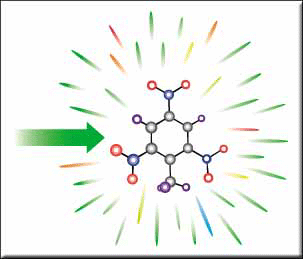Today (November 21, 1970) is the memorial day of Sir CV Raman, the first Science Nobel Laureate in India to discover the wavelength change in light waves.


Sir Chandrasekhara Venkata Raman
was born on November 7, 1888, in Thiruvanaikaval, near Tiruchirappalli in Tamil
Nadu. Chandrasekara Venkatraman's father, Chandrasekar Iyer was a teacher.
Venkatraman completed his schooling there as his father worked as a physics
lecturer in Visakhapatnam. He graduated from the Presidency College, Chennai in
1904 with a B.A. and a Gold Medal in Physics. Venkatraman continued his
postgraduate studies at the same college. In January 1907 he passed the M.A.
Graduation Examination with first-class marks in all subjects. In February 1907
he wrote the Finance Examination and won first place. He began his career in
June 1907 as Chief Accountant in Calcutta.


C. V. After graduating, Rama
joined the Government of India in 1907 as an accountant due to a lack of
employment opportunities in the field of science. However, in addition to his
work, he has been conducting process (recipe) studies on scattering at the
Indian Association for the Cultivation of Science, founded by Dr Mahendralal
Sarkar in Kolkata. He then joined the newly established Faculty of Polytechnic
Physics at the University of Calcutta in 1917. After 15 years in Kolkata, he
spent 15 years at the Indian Institute of Science in Bangalore. He then worked
as a director until his last days at the Raman Research Insitute, which he
founded.

C.V Raman was a delegation from
the University of Calcutta to the 1928 Conference of Scientists in Europe.
Raman was reading a book on the ship's open space while sailing in the
Mediterranean. Meanwhile, Raman had a strange feeling when he saw the sky. He
began to think about why the Mediterranean sky is so dark blue. At the time, he
had no answer. But that suspicion lingered in my mind. After completing his
voyage to Europe, he returned home to study the colour of the sky. As a result,
light-transmitting media can be solid, liquid, or gaseous.


He discovered the wavelength
change in scattered light waves as light passes through an object. The Raman Effect
is the name given to the wavelength change of such scattered light. He was
awarded the Nobel Prize for this discovery. This discovery is very useful and
world-renowned today for finding many properties of objects (without causing
any harm to the object). When light
passes through a translucent medium, it is scattered and changes its
wavelength. This is called the Raman Scattering or Raman Effect. Thus the
wavelength of the light emitted changes during the energy transfer between the
photons and the molecules in the incoming light. Lines with a frequency that
changes with the effect of Rama are called Rama lines. Thus scattered light has
three components. They are
Primary or Raleigh line with a wavelength equal to be incident line;
Stokes lines with longer
wavelengths than the primary line;
Anti-Stokes lines with less
wavelength than the mainline.

Raman scattering has been used
more in chemistry than in physics. The Raman Effect is primarily used for decomposition chemistry in organic and inorganic chemistry. The Rama spectrum
is the "fingerprint" of the object under analysis; Its advantage is
that it can be used not only for liquids but also for gases and solids.


Tracking products in the
petrochemical industry and the pharmaceutical industry, race detection of such
drugs without disintegrating the envelopes used to carry illicit drugs,
observing changes in the presence of paints in the presence of light, remotely
exposure to light, with a lifespan of 10–11 seconds with a lifespan of 10 to 11
years. Laser-Raman spectroscopic techniques help.

He also studied the violin and
other musical instruments and made new discoveries. He also explains why the
sky is blue during the day. His nephew Subramanian Chandrasekhar also received
the Nobel Prize. He used a spectrograph during his research. By directing
sunlight through various media, he noticed that some new ‘colour lines’ appeared
on the spectrometer. We see the rainbow, don't we? Raman also figured out how
it develops. This was later called the 'Raman effect' and his invention the
'Raman effect.


In 1926, C.V Raman founded and
edited the Indian Journal of Physics, a scientific journal. He started the
Indian Academy of Sciences and later served as its President from the very
beginning. He was also at the forefront of publishing its scientific currents.
He also founded and served as the President of the Current Science Association
in Bangalore, and founded a science laboratory called Current Science, which
became famous through the Institute. In the Journal of Indian Physics (Indian
J. Physics), he published the results of a study on February 28, 1928, entitled
A New Radiation, along with Srinivasa Krishna, the charcoal of his research
findings. Now the scientific light effect has led him to win the Nobel Prize
and to have a scientific effect name in his name. It is noteworthy that he
published in the Indian Journal.

In 1947, he was appointed the
first National Professor in the new government of independent India. In 1948,
he retired from the Indian Institute. The British government conferred on him
the title of "Knighthood" in 1929. In 1929 he was made Sir by the
Government of England. Italy's highest medal, the "Meducci" Medal.
The King of Mysore conferred the title of "Rajabapusan" in 1935.
Philadelphia was awarded the "Franklin" Medal in 1941.


The highest award of India, the
Bharat Ratna, was conferred on him in 1954 during his lifetime. In 1957 he was
awarded the All-World "Elaine Prize". Sir CV Raman, a Nobel laureate
who discovered the wavelength change in light waves, passed away on November
21, 1970, in Bangalore at the age of 82. Sir. C. February 28 was declared
National Science Day by V Raman, who published his Nobel Prize-winning research
results. The first Nobel Prize was awarded in 1930 to a fully educated scholar
in India.
Source By: Wikipedia
Information: Dr. P. Ramesh, Assistant
Professor of Physics, Nehru Memorial College, Puthanampatti, Trichy.

.jpg)

No comments:
Post a Comment